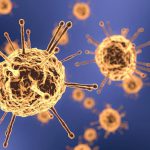Viral comments (6): One can write to this coronavirus

Coronavirus we talked about on a previous post already has who writes to it. In other words, we’ve given a name and know to whom and where to address the letter. It will be called MERS-CoV (derived from the English name, Middle East Respiratory Syndrome CoV) or Coronavirus (CoV) de la Síndrome Respiratòria de l’Orient Mitjà (in Catalan).
We can consider it a first cousin (abbreviated speaking) of SARS-CoV. This name has been already accepted by the World Health Organization (WHO) so from now on it will be its legal name.
We have to remember, however, that MERS-CoV and SARS-CoV have quite different genetic skeleton which determines that both use different cellular receptors during the infection process. In fact, MERS-CoV infection is associated with severe respiratory symptoms and subsequent renal failure, while SARS-CoV did not result, at the time, this second renal syndrome.
At least 4 independent cases of human transmission has already been shown. This very low number of cases, despite the attention it is receiving this virus, suggests that transmission efficiency is very low because some of the victims had contacted with dozens of people, creating a single infection. If these data are no further modified, the transmissibility of the virus appears very scarce, less than it had at its time the SARS-CoV and much less than that offered by the influenza virus each year.
That does not mean that the incidence has not increased; from our last blog and only in Saudi Arabia there are 49 confirmed cases with 32 deaths (a mortality rate of 60%). According to WHO the total number of deaths in date of June 15 was 34 people out of 60 infected diagnosed. In Saudi Arabia clinical cases are concentrated among men (75%) but it should not be ruled a social factor in this figure. There are two clear epidemiological patterns, groups or families infections in human-human transmission but only after continuous and prolonged contact, clusters of hospital infection and a third group with origin or unknown transmission route (the typical catchall box, otherwise a group not precisely small).
To date, unfortunately, there is no convincing evidence that the use of antiviral agents such as ribavirin or interferon provide any benefit.
Finally, some notes about their origin. The first ancestor would be found on a bat coronavirus (if we consider analogies in gene sequences), but it is highly unlikely that the relationship between bats and humans either directly (that leap bat virus to humans directly taking into account the frequency of contacts between the two is very, very unlikely). Speculatively is plausible that the virus passed from bats to farm or domestic animals in the area of the Arabian peninsula and of these (high frequency of contact) to humans. However, the uncertainies on this viral traffic through animal hosts are still numerous.
But this, this is another story.













